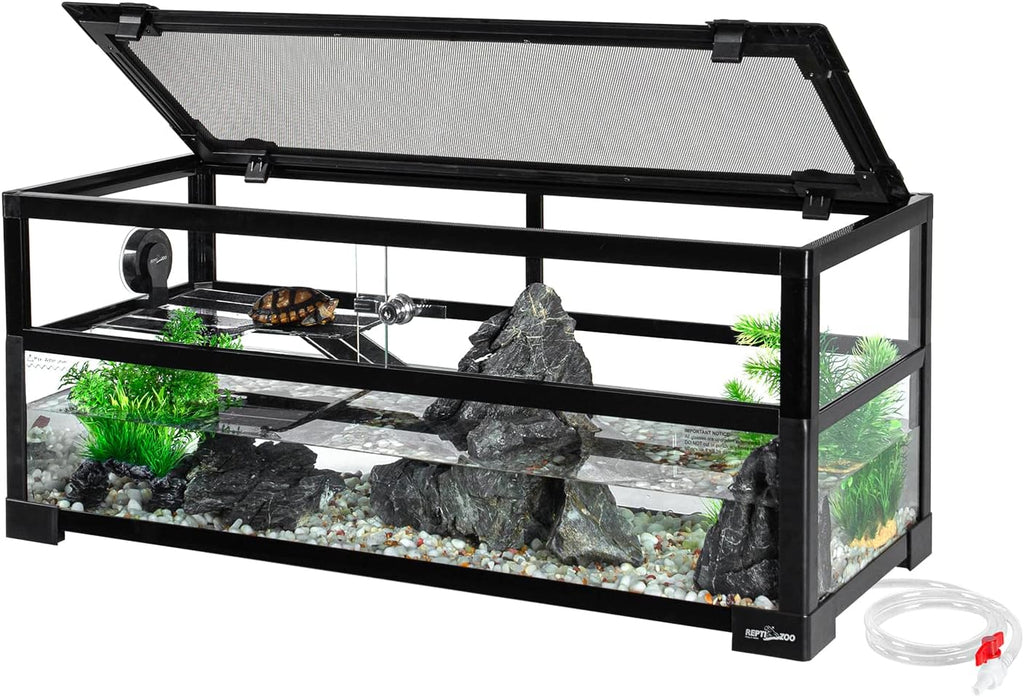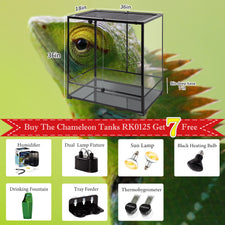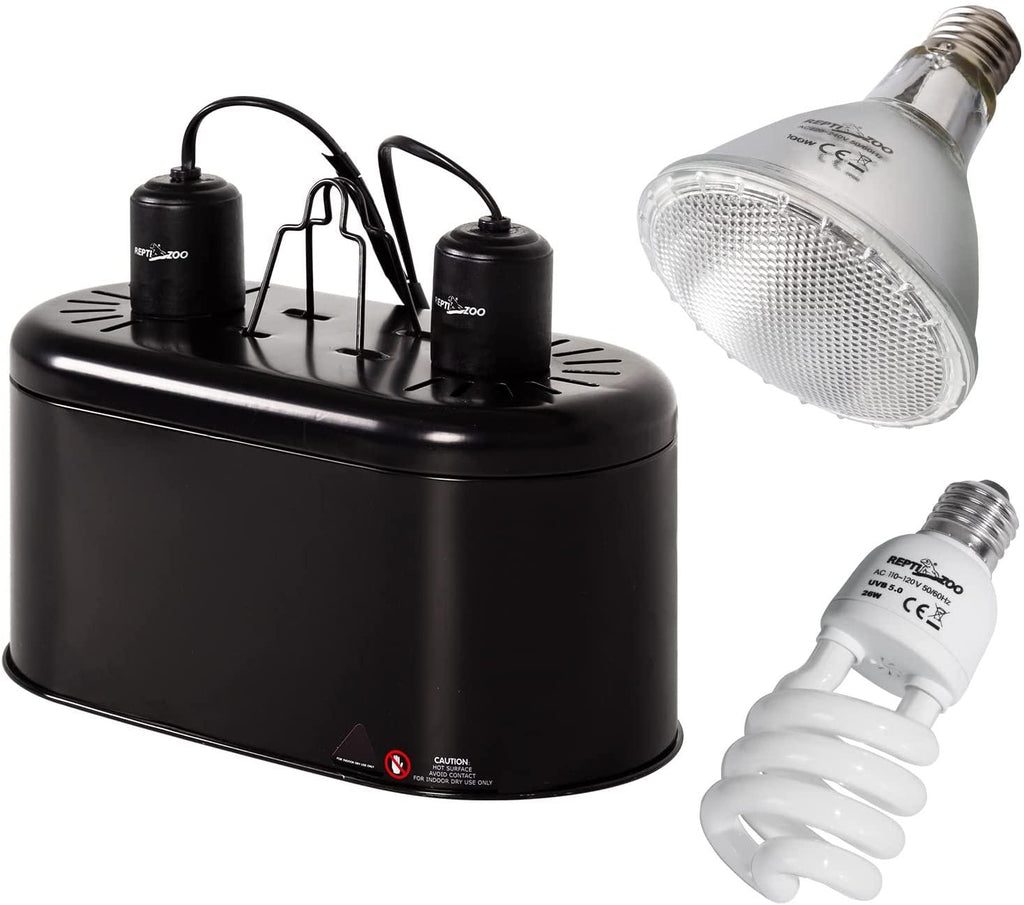The red-eared sliders are one of the famous pets among the turtle enthusiasts. Their scientific name is Trachemys scripta elegans and they are not only popular in the USA but the entire world. They got the name of the red-eared slider because of the red marking present near the ears and also because they can quickly retreat from the shores back into water. Here in this blog, we will discuss in detail how to take care of red-eared sliders.
History
You can find these beautiful turtles in the Mississippi Valley along the ponds, streams, creaks, and quiet rivers enjoying the sunlight. These turtles like the fresh water and soft muddy bottom along with a lot of vegetation. These chelonians also love basking in the sunlight. In the cold weather season, the red-eared sliders hibernate but this cannot be practiced at home. If you are a beginner you will find that sometimes your red-eared slider is floating or in the bottom of the tank not moving some people think their pet is dead but they sleep in this position. If your turtle is not moving you can assume that they are in deep sleep.
Turtle Enclosure
The turtle enclosure size of the red-eared slider should be big enough that they can swim 3 to 4 times their body size and then turn around. If you are getting a baby RES then a 10-20 gallon tank is enough but for adults you have to go up to 60-125 gallons. For hatchlings you will need up to 6 inches of water on the other hand adults need much deeper water for swimming.
If you look in the wild eared sliders are great swimmers, hatchlings are found in well-vegetated and shallow-water habitats and adults are found in deep water. In the enclosure, you should also structure some resting areas so they can rest after swimming. They will also need a basking area and that should be large enough that it provides both warmer and cooler areas.
Water Quality Maintenance
As you have seen water is the main medium of their enclosure so you should buy the best quality filter for your turtle. Always purchase a filter that can handle the tank double the size of the turtle enclosure and buy two filters so you have a spare one in case of emergency. Red-eared sliders excrete a large amount of ammonia in their stools so you will also need a biological filter that can convert ammonia into nitrates and nitrites. These bacteria are also present on the décor and gravel in the tank so do not scrub these areas as they can kill good bacteria.
It is advised to change 25% water after a week or 50% after two 2 to 3 weeks. You may also need an aquarium gravel vacuum that is designed to clean the debris accumulated on the floor of the tank. Always test water pH from time to time and make sure it stays between 6.0 and 8.0 as it is best for your red-eared sliders and the nitrate, and nitrite level should be 0.
Substrate
When you are having a red-eared slider it is advised to have no substrate in the bottom. If you want to add it for the esthetic purpose large gravel can be added. However, if you are using gravel then you may need an underwater gravel filter along with other filters to keep the water clean.
Lighting and Temperature
In the enclosure, you will need a temperature ranging between 65 to 75 in the cooler area and 85 to 95 F in the basking area. To maintain the temperature you can either use a basking bulb or a submersible heater. A submersible heater is recommended for baby turtles and a basking bulb is for adults.
In case you are planning to use an incandescent light use it in the basking area the bulb wattage is decided according to the size of the enclosure. You will also need a UVB bulb for your red-eared slider for 10 to 12 hours during that time. This exposure to UV light is important for bone and shell growth along with other body functions.
Regularly take readings from the water and basking area to keep the temperature in control. You will see that the red-eared slider spends a great amount of amount in the basking area.
Diet
Red-eared sliders are basically omnivores but in the start, they are carnivores and then develop into herbivorous adults. Most of the owners have a passion for feeding them a high-protein diet but it results in feeding too much of it and causes rapid growth and kidney and liver damage.
It is advised to feed your red-eared slider in a separate container. This has two benefits; first, it will maintain the water quality and it will also help you in knowing how much your turtle is eating. It will also help you know if your turtle is defecating properly or not as mostly they defecate in the feeding container. It also helps you with cleaning. However, make sure that the feeding container must be large so your turtle can easily move in it. Turtles that are over one year old should be fed twice a week. Always give them 20 minutes to eat before you remove the feeding container. Turtles that are less than one year old should be fed a commercial diet along with vegetables and animal protein. For adult feeding, you can follow the advice below:
The main part of their diet is commercial pellets and that is around 60 to 70% of their diet. Always buy quality commercial food for your turtle.
- Vegetables constitute around 20 to 30 percent of the diet. Choose different veggies when preparing food for your turtle. Mustard greens, collard greens, dandelion greens, broccoli, watercress, escarole, parsley, kale, Swiss chard, spinach, carrot, romaine, beet tops, water lettuce, water hyacinth, and duckweed are great choices.
- Protein is the main part of the diet and animal protein should be only 10% of the diet. Wax worms, mealworms, tubifex worms, earthworms, bloodworms, beef heart or chopped lean beef, cooked chicken, crayfish, cooked salmon, and mosquito larvae should be fed.
- Fruits only constitute 5% of the diet and should be used rarely. Melons, apples, bananas, grapes, berries, peaches, plums, and tomatoes can be fed.
- Turtles living in the enclosures have an additional need for calcium. Choose a calcium supplement that has also vitamin D3 of phosphorus in it. Sprinkle the calcium supplement on the food of turtles less than one year and 2 to 3 times a week on adult turtles' food. Similarly, multivitamins can also be sprinkled on the once or twice a week.
Sexing and Reproduction
When the red-eared slider reaches the age of maturity they appear smaller than females. Males also have longer front claws with thick tails. These longer nails should not be cut because they are used to stroke the female face and try to entice her mating in the fall and spring seasons. If the female accepts the gesture of the male both will sink into the bottom of the enclosure and mate. If the male is larger than the female keep an eye on them so accidental drowning does not happen. Red-eared sliders lay around 2 to 25 eggs in the period between April to July and hatch 65 to 75 days later if you incubate them properly.
If the female red-eared slider becomes restless and shows nesting behavior by scratching the basking spot and not eating food then she should be removed from there and transferred to a dark and warm box that has an air hole in it. Provide her with moistened soil or sand that doesn’t contain pesticides let her show nesting behavior and lay her eggs in less stressful conditions. Leave the female in the nesting box overnight and remove her early morning for swimming and feeding. This should be repeated many times before all the eggs are laid. A female that will not find an appropriate site for nesting will lay her eggs at the basking site or in the water.

Common Medical Issues
Salmonella:
Salmonellosis in red-eared sliders is very common and caused by the bacteria salmonella. It is commonly found in the gut of all animals and also in the environment. Normally, it doesn’t make them sick but it can result in poisoning in humans. Those people who are immunosuppressed are at a greater risk of getting this disease but the factors that are involved in preventing this problem are very straightforward personal hygiene and cleanliness of cage. Make sure that the turtle cage is free of any food or fecal material as it helps in preventing salmonella from becoming a problem. The easiest way to get away from this problem is to wash your hands after you handle the turtles. If you do this on a regular basis the risk of salmonellosis will get lower.
Vitamin A Deficiency:
The deficiency of vitamin A is another major problem in turtles, it occurs because of less intake of vitamins. The body needs vitamin A to make mucous membranes, healthy skin and ducts, and organs like salivary glands and kidneys. When there is less amount of vitamin A in the body it will upset the normal functioning of organs and skin and symptoms appear like mouth infection and swollen eyes. Those turtles that face these signs should be immediately taken to the vet for proper diagnosing and treatment.
Shell Rot:
This problem in turtles occurs because of different bacterial and fungal infections that can affect the turtle shell. This normally begins if the turtle shell gets damaged by a crack or scratch. This wound will give space to bacteria and fungi. As the infection grows it will eat the shell and create holes in it until it reaches the bones and body cavity. Once this problem appears you need to take your turtle to the vet.
Septicemia:
Blood poisoning or septicemia is a problem when bacteria are present in the blood. This can occur because of any previous infection, injury, or illness. The common symptoms that will appear are the red or pink color of the shell or skin, sores, lesions, lethargy, swelling of flesh, limbs, or eyes, and unable to pass urine. Septicemia is a real problem and needs immediate medical attention.
Respiratory Infection:
Respiratory infections are very common and deadly among turtles. It can be transferred to other turtles and need medical attention. The main causes of this problem are improper water temperature and basking temperature. Another cause behind the respiratory illness could be the vitamin A deficiency. The most common symptoms of respiratory infection are coughing, sneezing, oral discharge, nasal discharge, and open-mouth breathing. If you notice these behaviors in turtles consult your vet.
Handling and Temperament
These turtles are great pets if you meet their regular care needs. The main hurdle that most owners face is the use of large enclosures. Most turtles associate humans with food and when they see them they beg for food. That’s the reason most turtles are prone to biting the fingers and hand in the tank because they think of human fingers as food.
If you have a wild red-eared slider you will see that they are more frightened of humans and whenever they see a human they dive into the water. If you handle such a turtle they may go back into the shell and void the bladder and hiss and sometimes even bite. Generally, they don’t lash out but if you put a finger in front of their face they will bite it hard.
How to get a Red-eared Slider?
The sale of red-eared sliders was banned by the US government in 1975, it was banned to sell any turtle with a top shell less than 4 inches long to prevent the spread of salmonella and to prevent the destruction of native spices. However, in the world of the internet and a lot of information, private breeders are rearing these turtles at home and selling them online. There is still legislation required by the government regarding this practice. However, domestic red ears are always recommended over wild ones.
Conclusion
Red-eared Sliders are cute and great pets but to rear them you need proper information and guidance. If you give them a proper enclosure with the right requirements and good hygiene these turtles can become your best companions.










